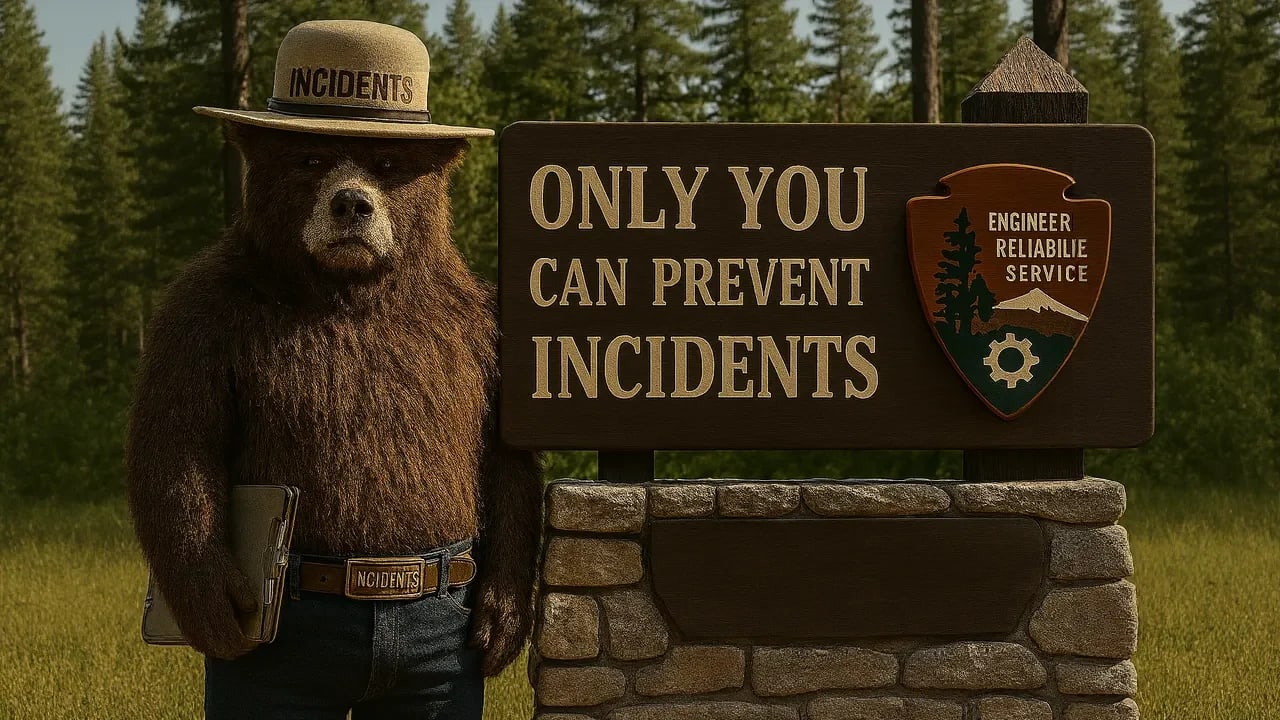Most post-mortems fail. Teams write detailed reports, assign action items that never get completed, then act surprised when the same incident happens again. The data is brutal: 80% of incidents stem from internal changes that weren't properly controlled,¹ 69% lack proactive alerts,¹ and most organizations see the same failures repeat quarter after quarter.

This 9-part series (3 core guides + 6 deep-dive articles) helps teams shift from "blame theater" to true learning engines, where psychological safety enables honest analysis, systemic thinking reveals root causes, and accountability ensures fixes actually happen. Whether you're a time-pressed executive, an engineering manager implementing changes, or a practitioner who needs the complete framework, there's a guide designed for your needs.
Choose Your Depth: The Core Guides
These three guides present the same framework at different levels of detail. Start where you need:
📊 Executive Brief (7 min)
Quick overview for leadership. Get the key concepts, ROI data, and implementation roadmap without the technical details.
🔧 Field Guide (20 min)
Practical playbook for managers and tech leads. Includes templates, facilitation tips, and common pitfalls to avoid.
📚 Definitive Guide (60 min)
Deep dive for practitioners who need the complete framework. Research-backed, with case studies from Google, Netflix, and Etsy.
Think of these as a ladder: skim the Executive Brief for context, apply with the Field Guide, then master through the Definitive Guide.
Deep Dive: Focus Articles
Each article tackles a specific challenge in building effective post-mortems:
1. Reality Check
Hard data on why most incidents are self-inflicted and preventable. Includes statistics that make the business case for change.
2. Psychological Safety
Why fear kills learning and how to build a blameless culture. Learn from Google's Project Aristotle and Etsy's radical transparency.
3. Systems Thinking
Move from "who messed up" to "what conditions made failure possible." Apply techniques from aviation and healthcare.
4. Action Accountability
Stop action items from dying in backlogs. Build tracking systems that ensure improvements actually happen.
5. Four-Phase Playbook
Step-by-step implementation from immediate response through continuous improvement. Includes timelines and success metrics.
6. Convincing Leaders
How to handle executive pushback and secure buy-in. Scripts for common objections with data-backed responses.
How to Use This Series
If you're a leader short on time:
Start with the Executive Brief for the business case, then read Convincing Leaders to handle objections.
If you're implementing changes:
Begin with the Field Guide, then dive into specific challenges with Psychological Safety and Action Accountability. Keep this Post-Mortem Cheat Sheet handy for your first few sessions.
If you want the complete framework:
The Definitive Guide contains everything, with links to focus articles for deeper exploration.
If your team struggles with specific issues:
- Blame culture → Psychological Safety
- Shallow analysis → Systems Thinking
- Incomplete fixes → Action Accountability
- No executive support → Convincing Leaders
Bookmark this page as your table of contents. It's designed to be your reference point as you transform your incident response culture.
Transform Your Incident Response
Incidents are inevitable, but wasting them is optional. Elite teams prevent ~95% of repeat incidents by treating each failure as a learning opportunity.² The difference isn't technical sophistication. It's having a framework that turns painful outages into systematic improvements.
This series gives you that framework. Whether you're fighting fires at a startup or scaling reliability at an enterprise, these guides provide the blueprint for building a true learning culture.
How are you using this series? I'd love to hear about your implementation, whether it's internal team workshops, process changes, or culture shifts. Share your story and help others learn from your journey.
Ready to transform your post-mortems? Start with the Definitive Guide for the complete framework, or jump to the Field Guide if you're ready to implement.
Resources
- Post-Mortem Cheat Sheet – free quick-reference checklist
- Post-Mortem Template – free, ready-to-use Notion template
- Blameless Post-Mortem Policy – how we run reviews